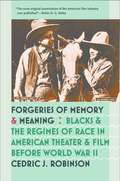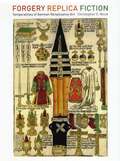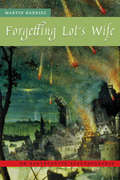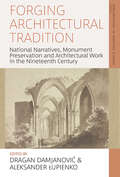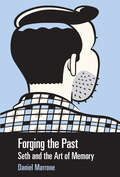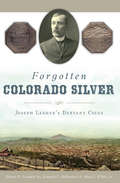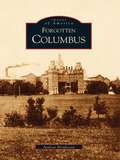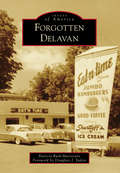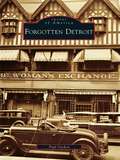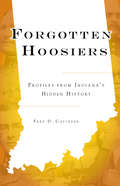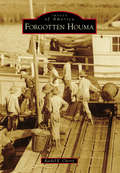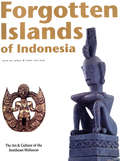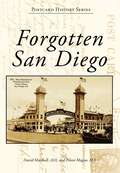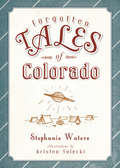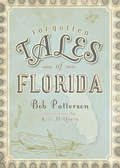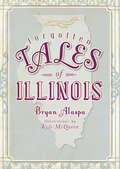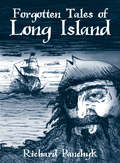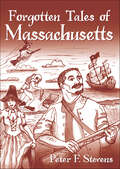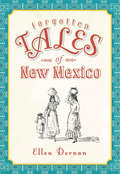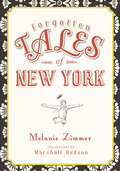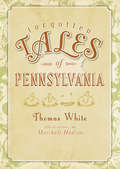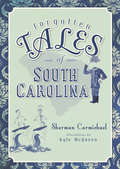- Table View
- List View
Forgeries of Memory and Meaning
by Cedric J. RobinsonCedric J. Robinson offers a new understanding of race in America through his analysis of theater and film of the early twentieth century. He argues that economic, political, and cultural forces present in the eras of silent film and the early "talkies" firmly entrenched limited representations of African Americans.Robinson grounds his study in contexts that illuminate the parallel growth of racial beliefs and capitalism, beginning with Shakespearean England and the development of international trade. He demonstrates how the needs of American commerce determined the construction of successive racial regimes that were publicized in the theater and in motion pictures, particularly through plantation and jungle films. In addition to providing new depth and complexity to the history of black representation, Robinson examines black resistance to these practices. Whereas D. W. Griffith appropriated black minstrelsy and romanticized a national myth of origins, Robinson argues that Oscar Micheaux transcended uplift films to create explicitly political critiques of the American national myth. Robinson's analysis marks a new way of approaching the intellectual, political, and media racism present in the beginnings of American narrative cinema.
Forgery, Replica, Fiction: Temporalities of German Renaissance Art
by Christopher WoodToday we often identify artifacts with the period when they were made. In more traditional cultures, however, such objects as pictures, effigies, and buildings were valued not as much for their chronological age as for their perceived links to the remote origins of religions, nations, monasteries, and families. As a result, Christopher Wood argues, pre-modern Germans tended not to distinguish between older buildings and their newer replacements, or between ancient icons and more recent forgeries. But Wood shows that over the course of the fifteenth and early sixteenth centuries, emerging replication technologies-- such as woodcut, copper engraving, and movable type-- altered the relationship between artifacts and time. Mechanization highlighted the artifice, materials, and individual authorship necessary to create an object, calling into question the replica's ability to represent a history that was not its own. Meanwhile, print catalyzed the new discipline of archaeological scholarship, which began to draw sharp distinctions between true and false claims about the past. Ultimately, as forged replicas lost their value as historical evidence, they found a new identity as the intentionally fictional image-making we have come to understand as art.
Forget Photography
by Andrew DewdneyWhy we must forget photography and reject the frame of reality it prescribes and delineates.The central paradox this book explores is that at the moment of photography's replacement by the algorithm and data flow, photographic cultures proliferate as never before. The afterlife of photography, residual as it may technically be, maintains a powerful cultural and representational hold on reality, which is important to understand in relationship to the new conditions. Forgetting photography is a strategy to reveal the redundant historicity of the photographic constellation and the cultural immobility of its epicenter. It attempts to liberate the image from these historic shackles, forged by art history and photographic theory. More important, perhaps, forgetting photography also entails rejecting the frame of reality it prescribes and delineates, and in doing so opens up other relationships between bodies, times, events, materials, memory, representation and the image. Forgetting photography attempts to develop a systematic method for revealing the limits and prescriptions of thinking with photography, which no amount of revisionism of post-photographic theory can get beyond. The world urgently needs to unthink photography and go beyond it in order to understand the present constitution of the image as well as the reality or world it shows. Forgetting photography will require a different way of organizing knowledge about the visual in culture that involves crossing different knowledges of visual culture, technologies, and mediums. It will also involve thinking differently about routine and creative labor and its knowledge practices within the institutions and organization of visual reproduction.
Forgetting Lot's Wife: On Destructive Spectatorship
by Martin HarriesCan looking at disaster and mass death destroy us? Forgetting Lot’s Wife provides a theory and a fragmentary history of destructive spectatorship in the twentieth century. Its subject is the notion that the sight of historical catastrophe can destroy the spectator. The fragments of this history all lead back to the story of Lot’s wife: looking back at the destruction of the cities of Sodom and Gomorrah, she turns into a pillar of salt. This biblical story of punishment and transformation, a nexus of sexuality, sight, and cities, becomes the template for the modern fear that looking back at disaster might petrify the spectator. Although rarely articulated directly,this idea remains powerful in our culture. This book traces some of its aesthetic, theoretical, and ethical consequences. Harries traces the figure of Lot’s wife across media. In extended engagements with examples from twentieth-century theater, film, and painting, he focuses on the theatrical theory of Antonin Artaud, a series of American films, and paintings by Anselm Kiefer. These examples all return to the story of Lot’s wife as a way to think about modern predicaments of the spectator. On the one hand, the sometimes veiled figure of Lot’s wife allows these artists to picture the desire to destroy the spectator; on the other, she stands as a sign of the potential danger to the spectator. These works, that is, enact critiques of the very desire that inspires them.The book closes with an extended meditation on September 11, criticizing the notion that we should have been destroyed by witnessing the events of that day.
Forging Architectural Tradition: National Narratives, Monument Preservation and Architectural Work in the Nineteenth Century (Explorations in Heritage Studies #4)
by Dragan Damjanović Aleksander ŁupienkoDuring the nineteenth century, a change developed in the way architectural objects from the distant past were viewed by contemporaries. Such edifices, be they churches, castles, chapels or various other buildings, were not only admired for their aesthetic values, but also for the role they played in ancient times, and their role as reminders of important events from the national past. Architectural heritage often was (and still is) an important element of nation building. Authors address the process of building national myths around certain architectural objects. National narratives are questioned, as is the position architectural heritage played in the nineteenth and the early twentieth centuries.
Forging the Past: Seth and the Art of Memory (Tom Inge Series on Comics Artists)
by Daniel MarroneAt once familiar and hard to place, the work of acclaimed Canadian cartoonist Seth evokes a world that no longer exists—and perhaps never existed, except in the panels of long-forgotten comics. Seth's distinctive drawing style strikingly recalls a bygone era of cartooning, an apt vehicle for melancholy, gently ironic narratives that depict the grip of the past on the present. Even when he appears to look to the past, however, Seth (born Gregory Gallant) is constantly pushing the medium of comics forward with sophisticated work that often incorporates metafiction, parody, and formal experimentation. Forging the Past offers a comprehensive account of this work and the complex interventions it makes into the past. Moving beyond common notions of nostalgia, Daniel Marrone explores the various ways in which Seth's comics induce readers to participate in forging histories and memories. Marrone discusses collecting, Canadian identity, New Yorker cartoons, authenticity, artifice, and ambiguity—all within the context of comics' unique structure and texture. Seth's comics are suffused with longing for the past, but on close examination this longing is revealed to be deeply ambivalent, ironic, and self-aware. Marrone undertakes the most thorough, sustained investigation of Seth's work to date, while advancing a broader argument about how comics operate as a literary medium. Included as an appendix is a substantial interview, conducted by the author, in which Seth candidly discusses his work, his peers, and his influences.
Forgotten Colorado Silver: Joseph Lesher’s Defiant Coins
by Robert D. Jr. Ken L. Hallenbeck Adna G. Wilde Jr.At the turn of the last century, miner Joseph Lesher attempted to raise the price of silver by privately minting octagonal �Referendum souvenir medal� coins with values of $1.25 or $1. They were common in Victor, Cripple Creek, Denver and other places in Colorado in the days after William Jennings Bryan fought unsuccessfully for free silver. Surviving an initial dust-up with the Secret Service, Lesher found a loophole to place them in circulation in 1900 and 1901. Today, coin collectors pay more than $1,000 for one. This is the story of Joseph Lesher and his audacious private mint, along with the merchants in the mining towns and elsewhere who supported him.
Forgotten Columbus (Images of America)
by Andrew HendersonColumbus, Ohio, "an odd amalgam of the planned and the spontaneous," was founded on the banks of the Scioto River in 1812 as the new seat of this young state's government. Located in the wilderness of central Ohio, nearly equidistant to the "real" cities of Cincinnati, Cleveland, and Toledo, Columbus experienced 100 years of unprecedented growth from which it would emerge the state's capital in more than title alone. Today, it is Ohio's largest city. Forgotten Columbus features many people, places, and events that defined this burgeoning 19th and early-20th century city. And above all, the places--from the Old Ohio Penitentiary, to Fort Hayes, to the recently revitalized Brewery District--which either no longer exist, or have changed so dramatically over the years that they are barely recognizable. Residents and visitors alike will find this a fascinating, insightful, and at times surprising look back at a forgotten era in Columbus's history.
Forgotten Delavan
by Douglass J. Yadon Patricia Ruth-MarsicanoWhen they left New York in 1836, brothers Henry and Samuel Phoenix intended to establish a temperance colony where inhabitants could live a life free from "demon alcohol." They found the perfect location in the Wisconsin Territory and named it Delavan after temperance leader and abolitionist Edward C. Delavan. The Phoenixes purchased 400 acres of land to sell to friends and family back in New York. The population soon boomed thanks to people like themselves who embraced the belief in an alcohol- and slavery-free society. All deeds were written with covenants prohibiting alcohol, but in 1845 the covenants were deemed unconstitutional. Since then, Delavan has been home to abolitionists, circus performers, and artists. It has drawn tourists from around the Midwest to its ballrooms, resorts, steamers, and beautiful lake. From Delavan's humble beginnings, the community has continued to grow to a population of more than 13,000, and today Delavan thrives on its industry, agriculture, and tourism.
Forgotten Detroit (Images of America)
by Paul VachonDetroiters know their history well. Founded in 1701 by Antoine de la Mothe Cadillac, the city subsisted on a variety of industries: fur trading, stove building, and, of course, the automobile. Names such as Henry Ford and Charles Lindbergh resonate in Detroiters' common memory. Detroit's meteoric rise during the 20th century established the city as an influential leader in commerce, culture, and religion. This growth spawned the development of numerous businesses, organizations, and institutions, many now forgotten. Albert Kahn left his indelible mark. Mary Chase Stratton created a new art form. And Henry Ford II changed the course of his family legacy. Forgotten Detroit delves into the wellspring of history to retell some of these lesser-known stories within Detroit's rich heritage.
Forgotten Hoosiers: Profiles from Indiana's Hidden History (Forgotten Tales)
by Fred D. CavinderVowing to overcome the sin of seriousness, Indiana-born humorist Don Herold lived up to his promise. Gifted with a droll sense of humor and a vivid imagination, he was one of the most widely read, if least remembered, Hoosiers. In Forgotten Hoosiers, journalist Fred D. Cavinder presents a collection of biographical sketches charting the lives of noteworthy Hoosiers who have been overlooked, as well as acclaimed figures whose Hoosier origins have been obscured. From Harland David Sanders, the pioneering Kentucky colonel who developed the world-famous chicken franchise, to Samuel G. Woodfill, whom many have called the greatest hero of World War I, Hoosiers- both known and unknown- have continued to make their marks across the country and the world.
Forgotten Houma
by Rachel E. CherryHouma officially became the seat of Terrebonne Parish in 1848; however, the area known as "terre bonne" ("the good earth") was inhabited much earlier. The Houma tribe settled the land as early as 1760, Arcadian French settlers arrived by 1785, Spanish settlers by 1790, and wealthy English landowners established the area's first plantations in 1828. Agriculture, hunting, and fishing activities such as oyster harvesting and shrimp drying were prominent occupations in the parish until the oil and gas industry took hold of the economy in the 1920s. Seemingly endless waterways, marshes, and bays, coupled with fertile farmland and oil production, helped foster Houma's lucrative economy; likewise, a blend of customs, traditions, and natural disasters have shaped its unique culture. Forgotten Houma uses vintage photographs to capture the community before modernization and destruction, awakening the spirits of former residents and the memories of earlier ways of life.
Forgotten Islands of Indonesia
by Joss Van Dijk Nico DejongeThis beautiful book contains over 170 unique photographs and pictures of one of the most interesting but least well known cultures in the Indonesian Archipelago.The traditional art of Maluku Tenggara, the Southeast Moluccas, is among the most sophisticated and expressive in the world. Simple tools were used to create masterpieces in wood, stone, textiles and precious metals, while the plaited work and earthenware of these islands are also of the very highest quality.the colonial period plunged the region into hopeless isolation. During the harsh rule of the Dutch many traditional woks of art, especially ancestor statues, were destroyed. Later, collectors stripped the islands of their masterpieces and the culture of Maluka Tenggara was forgotten.Forgotten Islands of Indonesia presents a unique survey of the finest examples of Southeast Moluccan art. This volume contains many photographs and descriptions which have never before been published. Set against the cultural background and supplemented by rare photographs taken in the field, the material culture of Maluku Tenggara, which is regarded as one of the most fascinating areas of Indonesia, is presented here comprehensively for the first time.
Forgotten Islands of Indonesia
by Joss Van Dijk Nico DejongeThis beautiful book contains over 170 unique photographs and pictures of one of the most interesting but least well known cultures in the Indonesian Archipelago.The traditional art of Maluku Tenggara, the Southeast Moluccas, is among the most sophisticated and expressive in the world. Simple tools were used to create masterpieces in wood, stone, textiles and precious metals, while the plaited work and earthenware of these islands are also of the very highest quality.the colonial period plunged the region into hopeless isolation. During the harsh rule of the Dutch many traditional woks of art, especially ancestor statues, were destroyed. Later, collectors stripped the islands of their masterpieces and the culture of Maluka Tenggara was forgotten.Forgotten Islands of Indonesia presents a unique survey of the finest examples of Southeast Moluccan art. This volume contains many photographs and descriptions which have never before been published. Set against the cultural background and supplemented by rare photographs taken in the field, the material culture of Maluku Tenggara, which is regarded as one of the most fascinating areas of Indonesia, is presented here comprehensively for the first time.
Forgotten Islands of Indonesia: The Art & Culture of the Southeast Moluccas
by Joss Van Dijk Nico DejongeThis beautiful book contains fascinating text and over 170 unique photographs of one of the most interesting but least well known cultures in the Indonesian Archipelago.The traditional art of Maluku Tenggara, the Southeast Moluccas, is among the most sophisticated and expressive in the world. Simple tools were used to create masterpieces in wood, stone, textiles and precious metals, while the plaited work and earthenware of these islands are also of the very highest quality.the colonial period plunged the region into hopeless isolation. During the harsh rule of the Dutch many traditional woks of art, especially ancestor statues, were destroyed. Later, collectors stripped the islands of their masterpieces and the culture of Maluka Tenggara was forgotten.Forgotten Islands of Indonesia presents a unique survey of the finest examples of Southeast Moluccan art. This volume contains many photographs and descriptions which have never before been published. Set against the cultural background and supplemented by rare photographs taken in the field, the material culture of Maluku Tenggara, which is regarded as one of the most fascinating areas of Indonesia, is presented here comprehensively for the first time.
Forgotten San Diego (Postcard History Series)
by David Marshall Eileen MagnoMemories are fleeting, and a region's history can easily be forgotten. This book features over 200 unique and interesting historical postcards that vividly capture San Diego County's forgotten past from 1890 to 1990. From bowling alleys to military bases, from giant dirigibles to sleek airplanes, from billionaires to bulldogs--San Diego has changed so fundamentally that much of its charming history has faded from our memories. Forgotten San Diego showcases the unique evolution of San Diego and its neighboring cities, making sure that the triumphs, tragedies, and oddities of this region live on.
Forgotten Tales of Colorado (Forgotten Tales)
by Stephanie WatersWild characters, diverse cultures, spooky myths and slippery sales schemes color Colorado's past. In a place where shameless showdowns and dusty shootouts over money, drink and women were once standard procedure, storytelling around campfires became an integral part of a rich heritage. From the jackalope and vampires to Indian curses and snake oil salesmen, the Centennial State has it all. Weirder still are the strange but true stories like that of the first body buried in La Junta's Fairview Cemetery, a man who landed there for refusing alcohol to a kid, and that of the hotel in Telluride that once offered a promotion that included funeral costs with your stay. While history may have neglected these silly, seedy and salacious stories, author Stephanie Waters has rediscovered Colorado's best forgotten tales.
Forgotten Tales of Florida (Forgotten Tales)
by Bob PattersonWith such a rich and significant history, it�s only natural that some of the best stories from the Sunshine State have been forgotten over time. Thankfully, master storyteller and St. Augustine resident Bob Patterson offers this collection of thestrangest, most fascinating stories and legends in Florida�s history from coast to coast, swamp to swamp. Enjoy the saga of William Ellis, a North Florida nature whisperer who escaped from his nursing home with the help of his varmint friends; step into the murk and mystery of the vanishing tribes of the Everglades; and could there really be gator-hungry sharks lurking in the St. John�s River? These stories and so many moreawait when you explore the Forgotten Tales of Florida.
Forgotten Tales of Illinois (Forgotten Tales)
by Bryan AlaspaDig up the men who tried to dig up Lincoln. Mull over the Mad Gasser of Mattoon and the 1977 thunderbird infestation, from a safe distance. Watch in horror as one of the greatest maritime disasters in U.S. history occurs twenty feet from the banks of the Chicago River or follow the course of the blimp crash that convinced a downtown bank employee that it was raining hell. Try not to blink as towns washed away by floods and shrines covered over by condominiums are dragged back from the margins of history into the center of the page, where they belong. After all, reasons author Bryan Alaspa, if the pope was eager to stop by the House of Crosses during his visit to Chicago, surely it is worth a look. Just beware: a quick glance into this book and you might not look up until you've read the whole gripping and grin-inspiring collection.
Forgotten Tales of Long Island (Forgotten Tales)
by Richard PanchykIn this enthralling new book, Richard Panchyk has compiled a collection of true stories from Long Island�s history sure to befuddle, baffle and bemuse even lifelong residents. Who knew that Plum Island was bought with a barrel of biscuits and a few fishhooks? Or that an Oyster Bay woman accused of being a witch was instead found guilty of being a Quaker? Little-known tales of snake-eyed horses, naked ghosts, swamp serpents and cats riding horses offer a fresh look at Long Island�s past. Culled from numerous period sources, including newspapers, books and historical records, these little stories are notable both as entertaining anecdotes and as forgotten history.
Forgotten Tales of Massachusetts (Forgotten Tales)
by Peter F. StevensW hen the first Pilgrims arrived on the shores of Massachusetts, they set foot in a world full of promise and new beginnings. Colonists witnessed the births of new children, governments and traditions, but even the Puritans could not wholly escape the Old World�s basest human instincts. In Plymouth, John Billington committed the nation�s first murder, and in Boston, the �Mass Bay Madam� Alice Thomas opened the first brothel. A Charlestown midwife and healer was hanged for witchcraft. Yet Massachusetts also produced William Phips, America�s first undersea treasure hunter; Peter Salem, the first black war hero; Ann Bradstreet, pioneer poetess; and William Ives, printer of the first board game. In these dramatic and vividly imaginative tales, Peter Stevens narrates fascinating episodes from Massachusetts history, piecing together forgotten yet essential aspects of American identity.
Forgotten Tales of New Mexico (Forgotten Tales)
by Ellen DornanNew Mexico, a place defined by a history of grand conflicts, conquistadores, Pueblo warriors, and nuclear scientists, will celebrate its state centennial in 2012. What better time for a collection of forgotten tales that recounts the adventures and exploits of priests, soldiers, witches, and politicians, who carved out a living in the harsh frontier. Ellen will introduce the reader to a cross-dressing Buffalo Soldier, a French trailblazer who opened a road from Santa Fe to Texas, an American spy who became a Mexican general, a Mexican raised by the Navajo who helped round up the Din for removal, and a governor whose head was removed and used as a football. Spanning from the 17th century to World War II, these stories are drawn from Native oral histories as well as the state's written records, and provide a sampling of New Mexico's colorful past.
Forgotten Tales of New York (Forgotten Tales Ser.)
by Melanie ZimmerLearn the Empire State&’s little known history—from bone-stealing dogs to the world&’s largest puzzle—by the author of Curiosities of the Finger Lakes. Few New Yorkers remember the night when firemen, in tuxedos and top hats, were dragged from a ball to extinguish a Waterloo blaze, or the typographical error that reported Theodore Roosevelt taking a &“bath&” instead of his presidential &“oath.&” Still fewer remember Cephas Bennett, a missionary from Utica and printer of the first Burmese Bible, or H. L. Mencken&’s humorous article on the history of the bathtub, still quoted today as factual although entirely invented. Seasoned storyteller Melanie Zimmer seamlessly weaves together these hard-to-believe, yet entirely true, tales. From the monster of Seneca Lake to the man who inspired the American icon Uncle Sam, discover the lost secrets of the Empire State. Includes photos!
Forgotten Tales of Pennsylvania (Forgotten Tales)
by Thomas White Marshall HudsonWilliam Penn, the might of Pittsburgh steel and the Revolutionary figures of Philadelphia dominate the scene of Pennsylvania history. Thomas White brings together a collection of tales that have been cast in the shadows by these giants of the Keystone State. From the 1869 storm that pelted Chester County with snails to the bloody end of the Cooley gang, White selects events with an eye for the humorous and strange. Mostly true accounts of cannibalistic feasts, goat-rescuing lawmen, heroic goldfish, the funeral of a gypsy queen and a Pittsburgh canine whose obituary was featured in the New York Times all leap from the lost pages of history.
Forgotten Tales of South Carolina (Forgotten Tales)
by Sherman CarmichaelFrom the desk of Sherman Carmichael comes a collection of about a hundred quirky and unpublished tales from the Palmetto State. Tales include everything from folk tales, urban legends, monsters, mermaids, ghost sightings, mysterious lights, UFO sightings, dinosaurs, and haunted locations.
